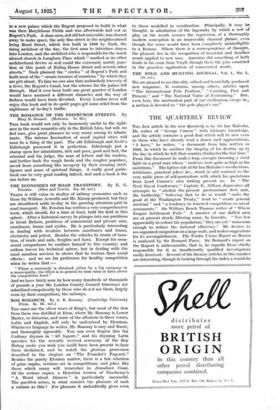MR. CHARLES IlAapga, as his 'crowd of readers can testify,
knows London exhaustively. His last book is as interesting as the former ones, and tells more of the near past about which we are all so often ignorant. The chapters dealing with Regent Street and Downing Street are specially inter- esting. Many people, perhaps, do not know that Regent Street was originally intended to form a straight approach to a new palace which the Regent proposed to build in what was then Marylebone Fields and was afterwards laid out as Regent's Park. A slum area, not old but miserable, was cleared away to make space, the only fine street in the neighbourhood being Bond Street, which was built in 1686 by Nash, the rising architect of the day, the first man to introduce stucco into London, and the architect who is responsible for the much abused church in Langham Place which "marked as no other architectural device so well could the extremely. untidy junc- tion at this point of Riding House Street and several other streets." Nash planned the " circles " of Regent's park and built most of the" ornate terraces of mansions " by which they are girt about. To him we owe also that melancholy travesty of a river, the Regent's Canal, but the scheme for the palace fell through.. Had it ever been built one great quarter of London -would have assumed a different character and the way of fashion would have been diverted. Every London lover will enjoy this book and in its quiet pages get some relief from the nightmare of to-day's traffic.







































 Previous page
Previous page